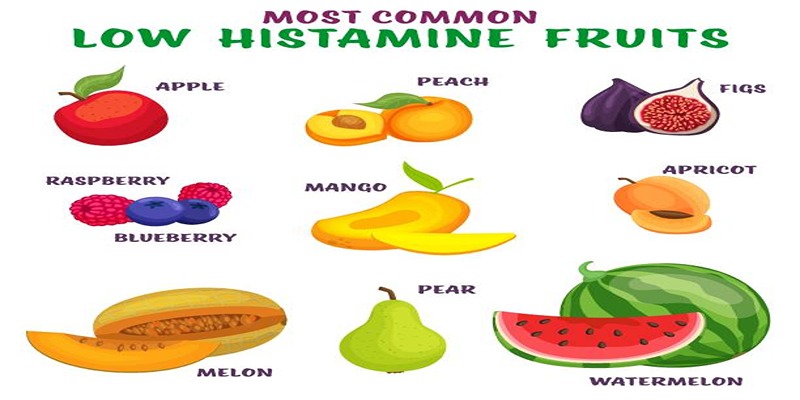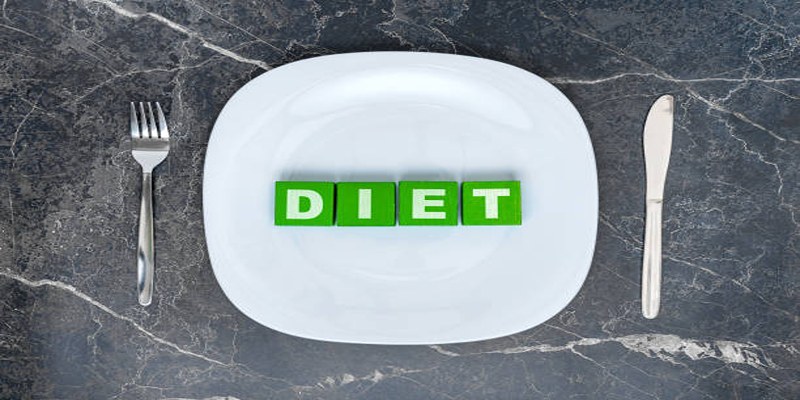The low histamine diet is designed to help individuals who are sensitive to histamines, which are naturally occurring compounds found in many foods. Histamines can trigger a range of symptoms, including headaches, hives, digestive issues, and respiratory difficulties, particularly in individuals with certain medical conditions such as histamine intolerance or mast cell activation disorder. By following this diet, you aim to reduce the intake of foods high in histamine and those that can prompt the body to release histamines. Some common foods to avoid include aged cheeses, cured meats, and fermented products. Implementing a low histamine diet can vary greatly from person to person, and it's often helpful to work with a healthcare professional to develop a plan suited to your specific needs to effectively manage symptoms and improve overall well-being.
What is a Low Histamine Diet?

A low histamine diet focuses on reducing the intake of foods high in histamines or those that stimulate histamine release in the body. This dietary approach is often recommended for individuals suffering from histamine intolerance, a condition where the body struggles to break down histamines due to insufficient levels of diamine oxidase (DAO), the enzyme responsible for metabolizing them. By following this diet, individuals may find relief from symptoms such as migraines, skin irritations, and gastrointestinal issues by avoiding foods like aged cheeses, fermented products, and certain processed meats.
The key to a low histamine diet is to select fresh, minimally processed foods and to understand personal triggers, as tolerance can vary significantly from person to person. Consulting with a healthcare provider can help tailor the diet to individual needs and ensure nutritional balance.
Foods to Avoid
When following a low histamine diet, it is essential to recognize and avoid certain foods that are known to be high in histamine content or that can trigger histamine release in the body. Some of the primary categories of foods to steer clear of include:
- Aged and Fermented Products: Foods such as aged cheeses, sauerkraut, kimchi, kombucha, and soy sauce are typically high in histamines due to the fermentation process.
- Cured and Processed Meats: Salami, ham, sausages, and other processed meats often contain elevated levels of histamines as a result of curing and preservation methods used.
- Vinegar and Balsamic-Based Products: Items like pickles and vinaigrette dressings should be avoided because of their fermented nature.
- Certain Fish: Fish, especially if not extremely fresh or if canned, can have high histamine levels. Examples include tuna, mackerel, and anchovies.
Understanding and avoiding these foods can help individuals manage their symptoms more effectively. Remember, individual tolerances may vary, and it can be beneficial to keep a food diary to pinpoint specific triggers.
Foods to Include
Incorporating the right foods into a low histamine diet can help manage symptoms effectively while ensuring a balanced nutritional intake. Here are some foods generally considered low in histamines that can often be included:
- Fresh Fruits and Vegetables: Most fresh vegetables and certain fruits such as apples, pears, and berries (excluding strawberries) are typically low in histamine, making them good choices. It's important to steer clear of overripe produce, which may have increased histamine levels.
- Fresh Meats and Poultry: Opt for fresh, unprocessed meats like chicken, turkey, and lamb. Ensure that these are cooked fresh rather than stored, as storage can increase histamine content.
- Gluten-Free Grains: Rice, quinoa, and oats are generally safe as they do not contribute to histamine levels. They provide a good source of carbohydrates and fiber.
- Non-Citrus Herbal Teas: Herbal teas, except those with citrus or spices like cinnamon and cloves, can be soothing and hydrating options safe for a low histamine diet.
- Dairy Alternatives: For those who need to avoid high-histamine aged cheeses and dairy, substitutes like rice milk and coconut-based products can be suitable choices.
Including these foods can help maintain a varied and nourishing diet while managing histamine levels. As always, it is crucial to pay attention to individual reactions, as tolerances can differ, and some may need to avoid particular items even if they are generally considered low in histamines.
Meal Planning and Recipes
Begin by selecting fresh ingredients and setting a schedule that allows for the preparation and consumption of meals at their freshest. Batch cooking can be a helpful strategy, enabling you to prepare meals in advance while reducing the stress of last-minute cooking, but items should be stored properly and consumed quickly to avoid histamine build-up.
Here are a few recipe ideas to inspire your meal planning on a low histamine diet:
- Grilled Lemon Herb Chicken: A simple yet flavorful dish made by marinating fresh chicken breasts in lemon juice, olive oil, and fresh herbs like thyme or basil. Grill until cooked through and serve with a side of steamed broccoli and quinoa.
- Vegetable Stir-Fry: Use an assortment of fresh vegetables such as zucchini, carrots, and bell peppers sauted in olive oil. Add cooked rice noodles or quinoa for a hearty, low histamine meal. Season with fresh herbs and a pinch of salt.
- Baked Apple with Cinnamon: For a soothing dessert, core an apple and sprinkle with a touch of cinnamon. Bake until the apple is tender, then enjoy as a warm, comforting option to satisfy your sweet cravings.
- Fresh Berry Smoothie: Blend together blueberries, pears, and rice milk for a refreshing smoothie that can serve as a quick breakfast or snack. This can be adjusted with different fruits according to your taste and tolerance.
Creating a personalized meal plan and experimenting with simple recipes like these can make following a low histamine diet enjoyable and effective.
Managing Symptoms and Tracking Progress

Effectively managing symptoms and tracking progress on a low histamine diet involves a combination of attention to dietary intake and self-awareness. Keeping a detailed food diary is a highly recommended practice. This involves logging every meal, snack, and beverage you consume, along with any symptoms that arise throughout the day. Over time, this diary can reveal patterns and help identify specific foods or ingredients that trigger symptoms, allowing for adjustments in the diet.
In addition to dietary logging, regular check-ins with a healthcare professional or a registered dietitian experienced in histamine intolerance can provide further insights and guidance. They can help interpret your food diary, recommend additional tests if necessary, and ensure nutritional adequacy is maintained throughout dietary adjustments.
Conclusion
Navigating a low histamine diet can initially seem overwhelming, but with the right approach, it becomes a manageable and rewarding endeavor. Understanding which foods to avoid and which to include is paramount to managing symptoms effectively. A disciplined meal planner and an attentive approach to tracking dietary intake contribute significantly to identifying personal triggers and maintaining overall health. By being proactive in dietary choices, and leveraging professional guidance when needed, individuals can foster a diet that not only reduces histamine exposure but also ensures a balanced and healthy nutritional intake. Ultimately, adopting a low histamine lifestyle can lead to improved well-being and a better quality of life.





